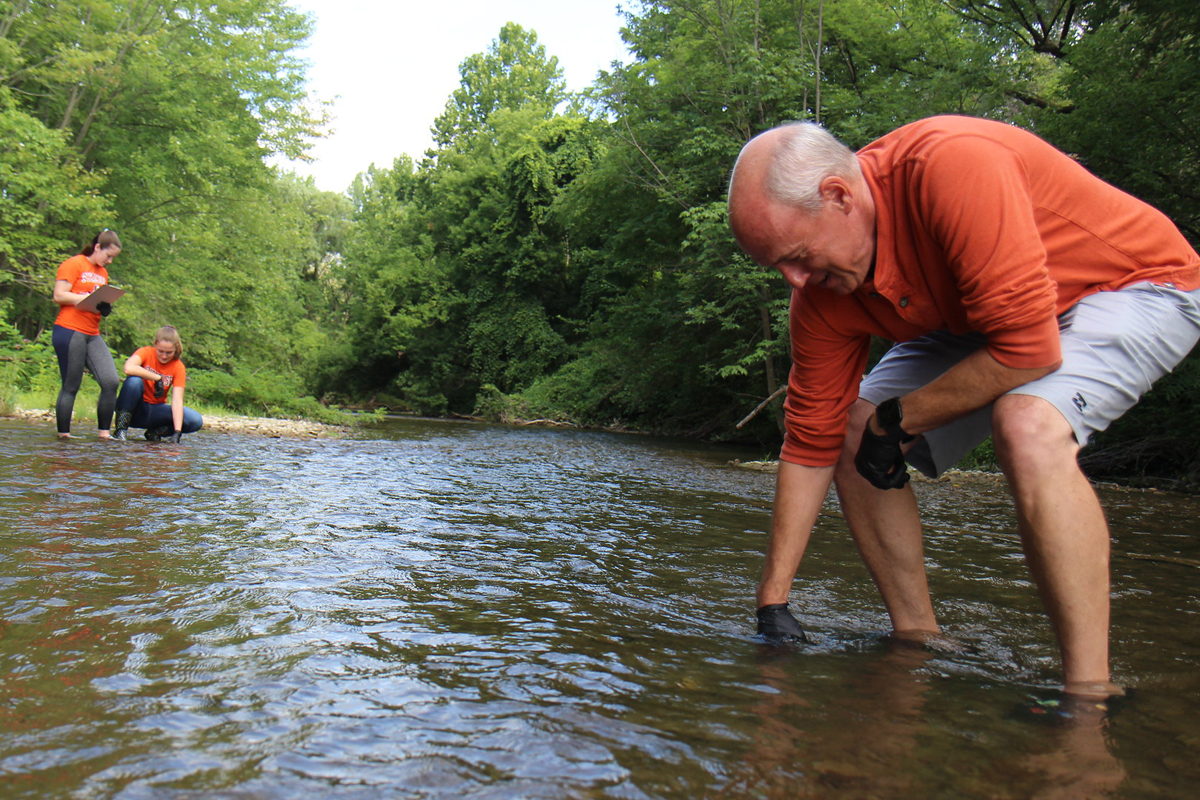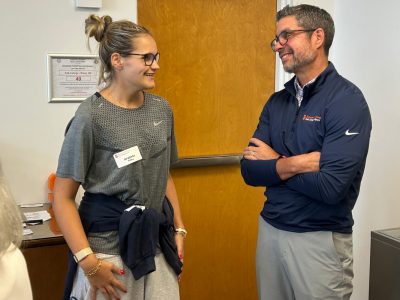Studying and Reversing the Damaging Effects of Pollution and Acid Rain With Charles Driscoll
Charles Driscoll, a leading environmental systems engineer at Syracuse University, shares how decades of research into acid rain and mercury pollution have led to successful restoration efforts in ecosystems like Onondaga Lake. In this episode of the ’Cuse Conversations podcast, Driscoll discusses the science behind pollution recovery and the resilience of nature when supported by effective environmental policy.
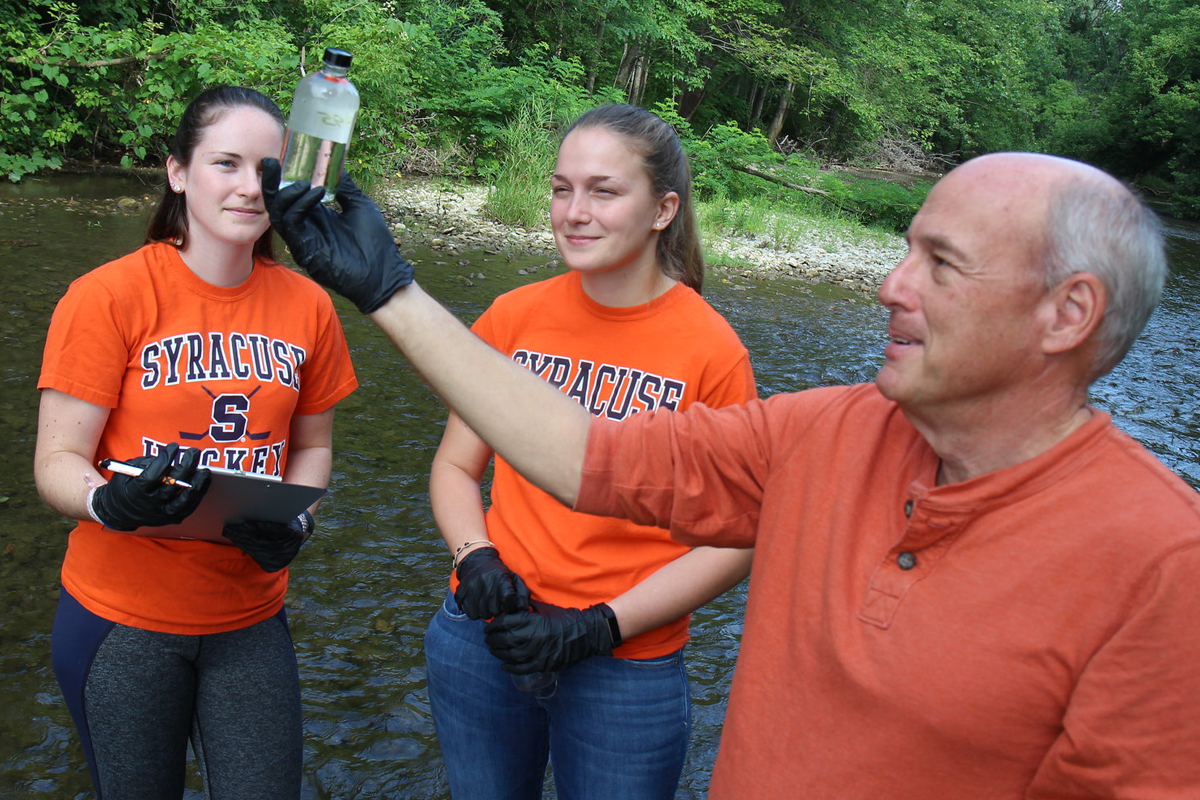
Before Charles Driscoll came to Syracuse University as a civil and environmental engineering professor, he had always been interested in ways to protect our environment and natural resources.
Growing up an avid camper and outdoors enthusiast, Driscoll set about studying the large-scale effects of pollutants on the natural environment, earning a civil engineering degree from the University of Maine and both a master’s degree and a Ph.D. in environmental engineering from Cornell University.
When he arrived on campus in 1979, Driscoll completed a dissertation examining the impact of acid rain on lakes in the Adirondacks, including the acidity effects on fish populations.
Later this summer, he will return to the Adirondacks to study how those lakes are recovering from acid rain and mercury pollution.
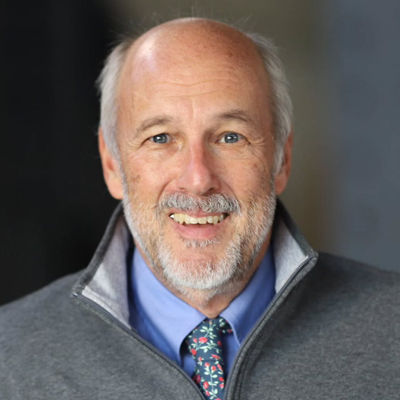
“It’s very exciting and a great opportunity to continue this research and work alongside partners like Rensselaer Polytechnic Institute, Cornell, the Ausable Freshwater Center, the New York State Department of Environmental Conservation to carry on this important work,” says Driscoll, the University and Distinguished Professor of Environmental Systems Engineering in the College of Engineering and Computer Science.
Driscoll, one of the nation’s leading experts on pollution research, developed a series of predictive environmental models that explore how chemicals in soil, water and vegetation change when exposed to air pollutants. He has devised strategies to reverse the damaging effects of acid rain and mercury contamination in lakes, including leading efforts to successfully restore nearby Onondaga Lake—once one of the most polluted lakes in the country—after developing new methods for decreasing mercury pollution.
“We’ve seen improvements in air quality. We’ve seen recovery from acid rain and other air pollutants,” Driscoll says. “Human generated air pollution really impact the environment on a very large scale. However, ecosystems can be quite resilient. With effective air quality management they can come back from rather significant disturbances.”
On this episode of the “’Cuse Conversations” podcast, Driscoll discusses the magnitude of his research, how he uses models to both understand the disturbances and lead restoration efforts and reflects on some of his successful remediations.
How would you describe the magnitude of your research?
When I started on the acid rain problem in the ’70s, the country was just becoming concerned about the effects of air pollution from a human health standpoint. There was relatively little analysis or discussion on those impacts on lakes, soil, vegetation and wildlife. This was a large-scale problem. We’re talking about air pollution from the Midwest impacting areas hundreds of miles downwind, and at the time a lot of people didn’t believe it was possible and were skeptical of the effects of air pollution.
That research led me to other problems like the issue with mercury deposition and climate change. The early work on acid rain really informed and guided my subsequent research.
How are models used to understand the effects of these disturbances and to lead remediation efforts?
We were interested in developing a model that we could use as a tool to validate our understanding of the phenomena of air pollution on ecosystems but also make projections on how the ecosystems might recover under different emission control strategies. I learned a lot from interactions with my biological colleagues and soil scientists.
We expanded and applied these models to the Adirondacks and national parks, particularly the Great Smoky Mountains National Park. About 10 years ago, we made projections for how the park might recover from decreases in acid rain. Now, they want us to go back and use our model to see how well those projections did because acid rain emissions decreased.
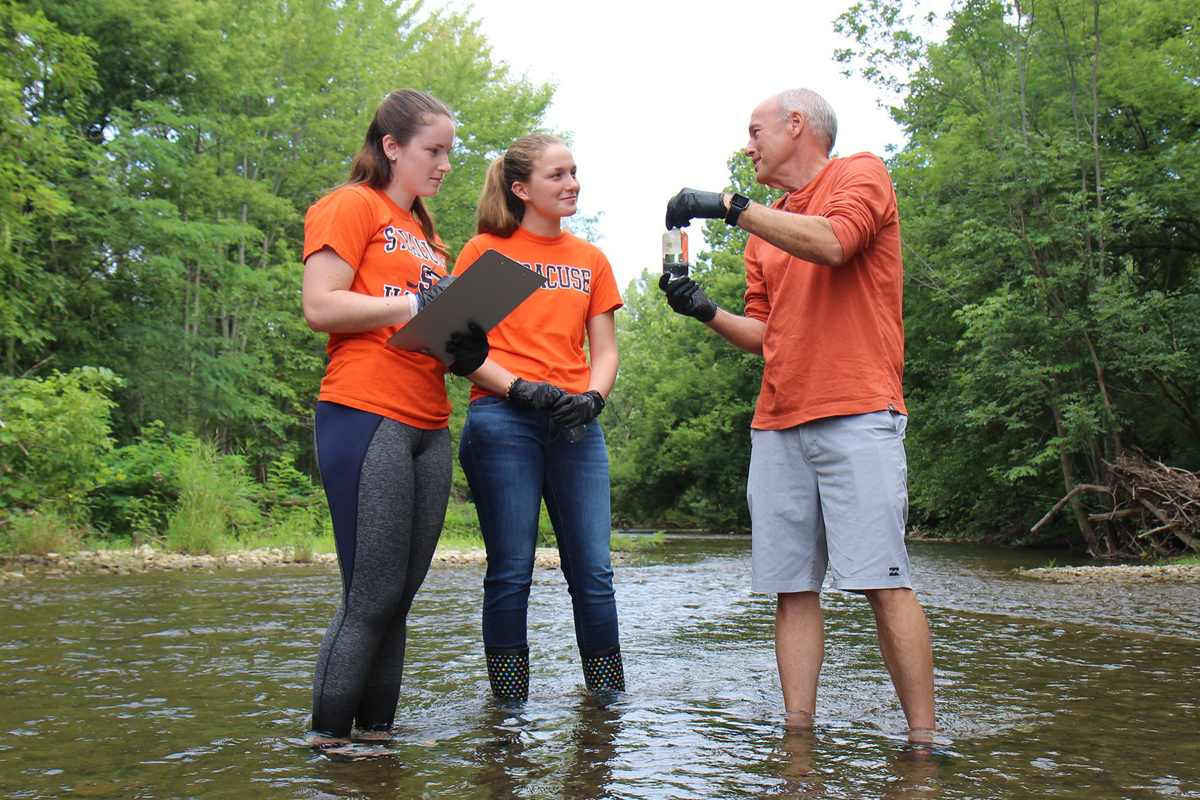
How successful have these remediation initiatives been?
Remediation is a real challenge for something like acid rain. We’ve done remediation in Onondaga Lake and that’s been wildly successful because it’s a relatively local problem. But acid rain affects high elevation areas. From Georgia up to Maine, those soils and waters have been heavily impacted.
We have done experiments where we’ve added base chemicals like limestone, commonly used in gardens to neutralize acidity, and then looked at the response of the system. We know from those experiments that if we restore bases like calcium and magnesium to the soil this can neutralize the acidity that is toxic to plants and fish and that we can recover the ecosystems. The trouble is the footprint of acid rain is massive, and it’s very difficult to do that on any meaningful scale.
We’ve learned we have to focus on emission reductions to recover these ecosystems, particularly the soil. Lakes recover relatively quickly, but the soil develops over tens of thousands of years and recover slowly.
